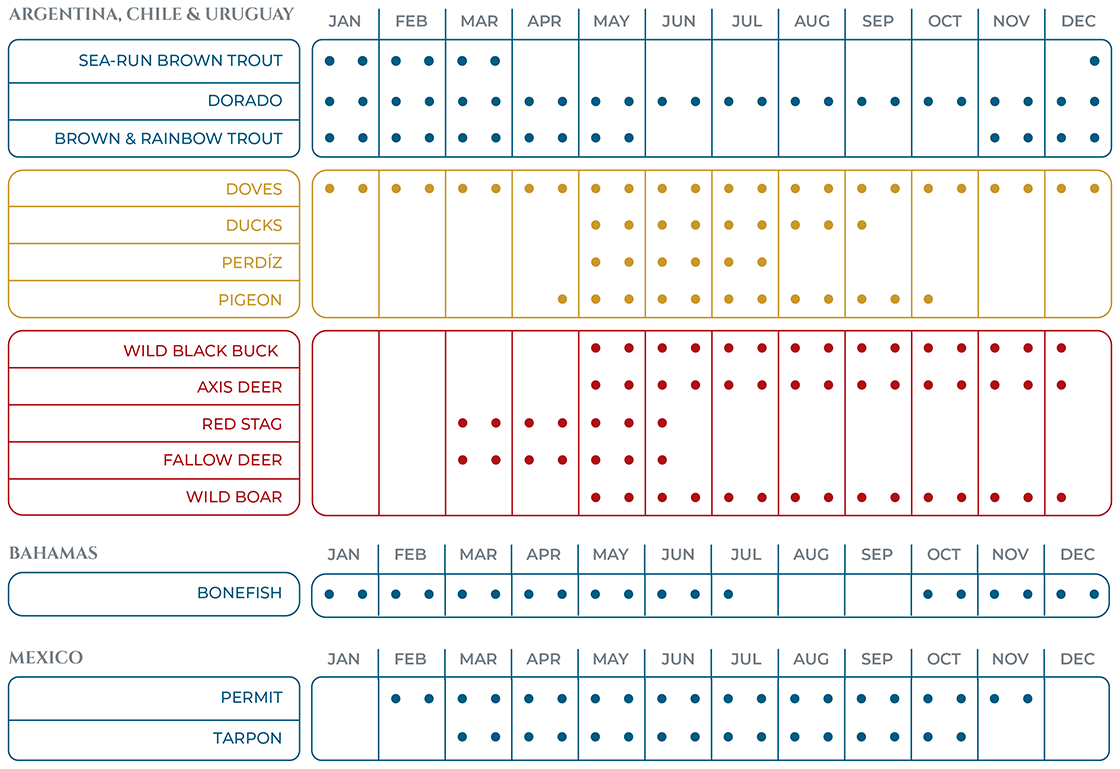The high-gradient, trout-rich Futaleufú River flows right by the front door of the lodge. Browns and rainbows are wild and healthy and can range up to five or more pounds. Fish eat a mix of streamers, dries, and nymphs depending on the season, and the terrestrial fishing is a summertime mainstay. Big fish on ultra-buoyant foam flies is our specialty. In addition to rafting the Futaleufú, we offer exploratory missions to remote streams and trophy lakes in the area.
Rainbow Trout
Is there a more beautiful or popular fish? Depicted on corporate logos, ball caps, and gas station signs, the rainbow trout is the ideal symbol combining beauty and sport. Rainbow trout (Oncorhynchus mykiss) is favored by fly fishers because of its beautiful coloration—for which it’s named—and its fighting ability. Wild rainbow trout typically have olive-colored backs, tails peppered with dark spots, and silvery sides that look as if they’ve been painted pink and crimson. The rainbow trout is actually a member of the Pacific salmon family, and has been stocked on six continents. It can be found in freshwater streams, rivers, and lakes, also in saltwater bays and open ocean as steelhead (the sea-run form of the fish, which returns to freshwater to spawn). Trout prefer cold, oxygenated moderately moving creeks and streams with plenty of cover and pools, although they also do well in food-rich backcountry lakes and rivers.
Rainbow size generally relates to the size of the water they can be found in, as well as the available forage base. Smaller creeks are usually home to smaller fish, while bigger rainbows inhabit bigger watersheds. Generally speaking, a three-year-old rainbow trout in a general trout stream grows to 12 inches but can exceed 20 inches if food is abundant and water temperatures are stable throughout the year.
Brown Trout
Brown Trout (Salmo trutta) and Sea Trout (S. truttamorpha trutta) are both fish of the same species. They can be distinguished by the fact that that resident, non-migrating browns live in freshwater river systems such as Chile’s Futaleufú, while the sea trout of Tierra del Fuego show anadromous tendencies, migrating to the ocean and returning to freshwater as massive steelhead-size specimens to spawn.
Brown trout are native to Europe and Asia, but the natural distribution of the migratory forms may be, in fact, circumpolar. Sea-run brown trout are not considered endangered in any location. But in some cases, individual stocks are under various degrees of stress because of habitat degradation and artificial propagation leading to introgression. Brown trout like cold (60-65 degrees F, or 15-18 degrees C), well-oxygenated waters, especially large streams in mountainous areas. The in-stream cover is important, and they are more likely to be found where there are submerged rocks, undercut banks, and overhanging vegetation.
Browns in freshwater have the ability to grow to 9+ pounds. Although in most small rivers, mature brown might average 2 to 3 pounds. The sea-run variations of Argentina are another story, and consistently push the 20-30+ pound range—a challenge for fly fishers seeking the biggest, baddest browns on the planet.
Brown trout are active both by day and by night and are predatory feeders. While in freshwater, the diet typically includes streambed invertebrates, small fish, frogs, wayward mice, and insects flying near the water’s surface. A brown’s penchant for insect larvae, pupae, nymphs, and adult insects is what makes this trout a fly-fishing fav








